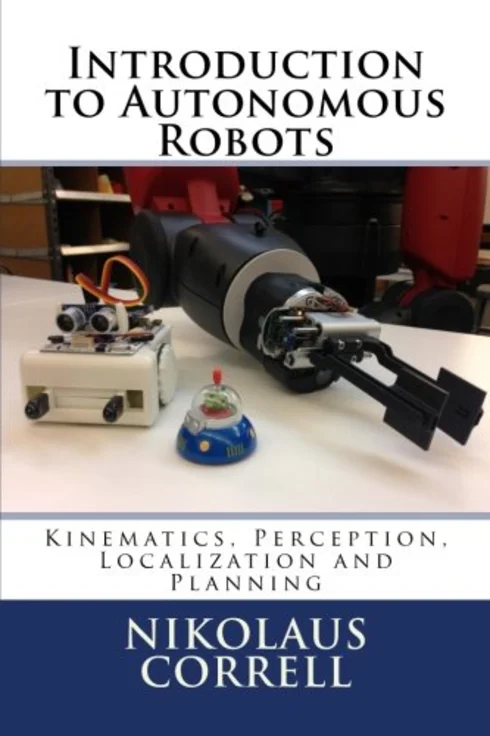
Introduction to Autonomous Robots
![]()
![]()
![]()
![]()
![]()
Nikolaus Correll, University of Colorado at Boulder
Copyright Year:
Last Update: 2020
ISBN 13: 9780692700877
Publisher: Nikolaus Correll
Language: English
Formats Available
Conditions of Use
![]() Attribution-NonCommercial
Attribution-NonCommercial
CC BY-NC
Reviews
Reviewed by Amol Mali, Associate Professor, University of Wisconsin - Milwaukee on 1/12/24
The book covers all important topics in the field of autonomous robots in a manner suitable for its intended audience. The topics are presented in correct order. There is no glossary or index, but the table of contents is sufficiently detailed. read more
![]()
![]()
![]()
![]()
![]()
Reviewed by Amol Mali, Associate Professor, University of Wisconsin - Milwaukee on 1/12/24
Comprehensiveness
The book covers all important topics in the field of autonomous robots in a manner suitable for its intended audience. The topics are presented in correct order. There is no glossary or index, but the table of contents is sufficiently detailed.
Content Accuracy
Definitions, equations, examples, exercises, diagrams, explanations, and other content are accurate. The bibliography contains
publications authored by highly reputed researchers, and publications from top journals and conferences.
Relevance/Longevity
The most recent references in the bibliography were published in 2020. The book covers foundational topics. So it will be relevant for several decades. The book is modular, making it easy to update it without introducing inconsistencies or overlaps.
Clarity
There are multiple explanations at many places for reinforcing readers' understanding. It is clear that the author has cared about readers by imagining possible questions and doubts and addressing them.
Consistency
There is consistency within individual chapters, consistency among chapters, consistency between chapters and corresponding exercises, consistency with and among appendices, and consistency between the part containing appendices and the part containing chapters.
Modularity
The topics are ordered based on conceptual dependency and complexity. It is easy to identify prerequisites if only a part of the book is covered.
Organization/Structure/Flow
Concepts that are very closely related are covered in the same chapter. The number of chapters and their lengths are appropriate.
Interface
It is very easy to move from any page to any other page in a few seconds. Sections, subsections, and figures are numbered, making it easier to navigate while understanding the conceptual hierarchies.
Grammatical Errors
I did not find spelling mistakes or punctuation errors. There are no sentences or paragraphs that are very long. This makes reading and understanding easy.
Cultural Relevance
The book is focused purely on science and engineering of autonomous robots. It has no cultural references.
CommentsThe book is easy to understand. So it is suitable for self-study in case a student cannot take an introductory course on autonomous robots for any reason.
Table of Contents
- 1 Introduction
- 2 Locomotion and Manipulation
- 3 Forward and Inverse Kinematics
- 4 Path Planning
- 5 Sensors
- 6 Vision
- 7 Feature extraction
- 8 Uncertainty and Error Propagation
- 9 Localization
- 10 Grasping
- 11 Simultaneous Localization and Mapping
- 12 RGB-D SLAM
About the Book
This book introduces concepts in mobile, autonomous robotics to 3rd-4th year students in Computer Science or a related discipline. The book covers principles of robot motion, forward and inverse kinematics of robotic arms and simple wheeled platforms, perception, error propagation, localization and simultaneous localization and mapping. The cover picture shows a wind-up toy that is smart enough to not fall off a table just using intelligent mechanism design and illustrate the importance of the mechanism in designing intelligent, autonomous systems. This book is open source, open to contributions, and released under a creative common license.
About the Contributors
Author
Nikolaus Correll is a roboticist and an Assistant Professor at the University of Colorado at Boulder in the Department of Computer Science with courtesy appointments in the departments of Aerospace, Electrical and Materials Engineering.
